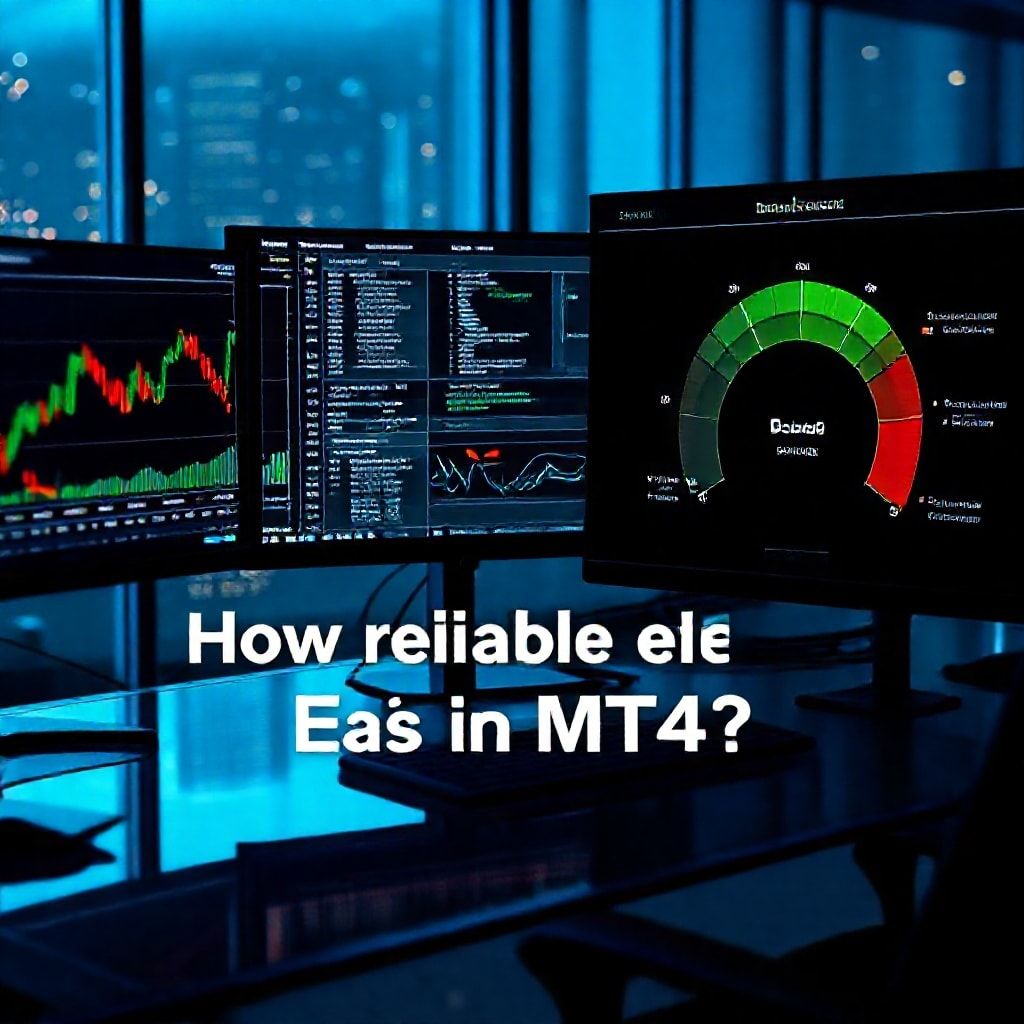How reliable are EAs on MT4?
How Reliable Are EAs on MT4?
Introduction
If you’ve dipped a toe into automated trading, MT4’s Expert Advisors are that familiar friend who promises round-the-clock precision. Real talk: reliability isn’t black and white. EAs can perform beautifully on backtests, but live results hinge on data quality, broker execution, and how thoughtfully the strategy is engineered. Traders often notice a gap between pretend-perfect performance and the real-time grind, where slippage, latency, and changing market regimes bite back. The good news: with the right setup—robust data, disciplined risk controls, and careful forward testing—you can stack the odds in your favor without turning MT4 into a black box.

What MT4 EAs can do
- Automate rule-based trading: an EA can monitor charts, apply your entry/exit logic, and manage positions 24/7, removing emotional decisions.
- Backtest and walk-forward test: you can see how a strategy would have behaved across historical cycles, then test its robustness by simulating future markets.
- Optimize parameters with constraints: you can tune inputs to fit specific pairs or timeframes while imposing risk checks to avoid overfitting.
- Manage risk automatically: fixed lots, fractional risk per trade, stop losses, and trailing stops can be baked in, so a run of bad luck doesn’t derail the whole account.
- Diversify within MT4’s ecosystem: many brokers offer multiple asset types (forex, CFDs on indices or commodities, some crypto proxies), so a single EA can be deployed across a basket of instruments.
Key reliability factors
- Data quality and broker environment: MT4’s performance is only as good as the price feed and the broker’s execution. Fresh, tick-level data matters for backtests; live trading suffers with wide spreads, slippage, or delayed order fills.
- Latency and order execution: ECN-like setups with tight spreads improve reliability; dealing desks or flaky connectivity can distort results much more in live trading than in a sim.
- EA design and risk controls: a robust EA uses sensible money management, drawdown limits, and fail-safes (e.g., max exposure per day). If a single parameter breakpoints during a regime shift, automatic risk checks can prevent catastrophic losses.
- Testing discipline: forward-testing on a demo or small live account under real conditions helps catch overfitting and data-snooping biases before you scale up.
- Infrastructure: a reliable VPS, routine maintenance, and solid logging help you diagnose issues quickly when something goes off rails.
Asset coverage and considerations
MT4 shines with forex and CFDs; many brokers also offer indices, commodities, and some crypto proxies. Cross-asset EAs can run on these, but not all instruments have the same liquidity or data quality. A strategy that thrives on liquid majors may struggle on thinly traded pairs or during news-driven spikes. Diversification helps, but it also adds complexity—make sure each asset you arm with an EA has clean data, manageable spreads, and predictable volatility.
Reliability tips and leverage strategies
- Start with transparent data and live testing: run the EA on a demo account, then scale gradually with small real lots as you verify consistency.
- Keep risk tight: cap maximum drawdown per trade and per day, use prudent leverage, and avoid over-optimizing parameters.
- Use multiple layers of analysis: rely on chart patterns or indicators as confirmation rather than sole triggers. Pair automated rules with human oversight, especially in volatile sessions.
- Ensure logging and easy rollback: detailed logs help diagnose why an EA did what it did, and being able to revert to a proven baseline quickly is invaluable.
- Consider diversification with purpose: don’t load a single EA across every asset. Use strategies with separate risk envelopes and correlation awareness.
DeFi, smart contracts, and the road ahead
Decentralized finance promises smarter, programmable money, but it isn’t a silver bullet for reliability. On-ramp workflows—bridging MT4-based automation to on-chain liquidity or cross-chain oracles—introduce new risks (smart-contract bugs, MEV, custody challenges). The trend is toward AI-driven, adaptive strategies, on-chain data feeds, and smarter risk controls, yet the challenges—security, regulation, and liquidity fragmentation—remain real. Expect smarter bots that blend traditional MT4 automation with on-chain signals, but demand rigorous testing and security audits.
A quick, memorable takeaway
Reliable EAs on MT4 come down to data integrity, execution quality, and disciplined risk play. You don’t chase the dream of “one bot to rule them all”—you build a resilient toolkit: robust backtests, careful forward testing, diversified assets, and smart risk management. In the evolving mix of MT4 automation, DeFi, and AI-driven tech, the smartest move is steady validation and incremental scaling.
Tagline
Trade with clarity, not hype—EAs on MT4 are reliable when you align data, execution, and risk.
YOU MAY ALSO LIKE




